I Love Multiple, solo exhibition by Franco Mazzucchelli curated by Sabino Maria Frassà at Gaggenau DesignElementi in Rome tells in nine works, most of which unpublished, over fifty years of evolution of the idea of ”multiple” and “repetition” in the artist’s research, from Inflatable Multiple Game (1969) to the unpublished works BD Convesso Oro and BD Convesso Oro Viola (2020) created during the quarantine. In the multifaceted conceptual experimentation of the sixties, Mazzucchelli emerged for his very personal investigation of the expressive possibilities of synthetic materials taken from the industrial sphere, such as polyester resin, expanded polyurethane, shrink wrap and inflatable p.v.c., on which a broader reflection on the status of the artistic object is grafted. The exhibition Franco Mazzucchelli. I Love Multiple is part of the plan for the support of creative excellence promoted for three years by Gaggenau, the historic luxury design brand, together with the non-profit project Cramum for art in Italy.
Camilla Pappagallo: In 1966 the translation of “The work of art in the age of its technical reproducibility” by Walter Benjamin arrived in Italy, which contributed decisively to overturn the conception of contemporary art, already in turmoil for the students motions who would soon explode. What influence did this text (and the cultural context of those years) have on the development of your artistic research?
Franco Mazzucchelli: In those years, if I have to be honest, the real influence came from Dadaist art and from the personal encounter with Duchamp, Ernst and Arp: the provocation and the taste of playing in art. I understand it is a text that has made history, but the theses contained in it have never completely convinced me, especially if they have fallen into the Italian context of those years (’60 ed). Obviously it was a support and a point of comparison to which I did not join. The idea of multiple, as documented by Frassà in the exhibition at Gaggenau Rome, immediately assumed an economic-bourgeois value in Italy that I was not interested in very much and that had very little to do with the approach to the masses theorized and foreseen by Benjamin. The multiples since the 1950s and 1960s began to cost a lot and if they didn’t cost they were not purchased: when I tried to make “economic” works by evaluating the hours of my work as those of a worker, I could not sell them. Unfortunately, our art system assumes (now as then) that whoever buys a work is led to see in the price – high – a guarantee of value. Not only that, to think of it in those years the real popular multiple was the “poster” of the exhibitions that “furnished” the walls of us young people or of those who could not afford either the multiple or the unique work. Maybe we Italians are like this: the sense of possession is part of us.
Your actions entitled “Abandonments” consisted of placing large inflatable sculptures in urban spaces or remote places, exposing them to destruction, removal or stealing. Could an extreme fascination for the uniqueness, if not the work, of its destiny be identified in this invitation to fate?
My art was abandonment, not the inflatable, which I prefer not to call sculpture: the inflatables were part of an installation, they were the means by which I carried out my interventions. Moreover, at the time I was interested in analyzing, measuring and verifying the interaction generated by my inflatables with places and people not belonging to the art world: workers and students in the suburbs, bathers on the beaches, children in kindergartens. These actions, as you rightly says, are always unique and unrepeatable and for me this aspect was and is fundamental: on the one hand it allows me not to get bored, on the other hand art remains for me a “single copy”; the rest, if one cannot define design, is a hybrid form of decoration in which both aesthetic and socio-economic factors weigh heavily. Precisely for this reason, since the first action – the one in Camargue in 1964 – I decided to create documentary works to remember and tell “my” art, workers so that they were unique pieces: I used the same image only once attacking the remains of inflatables, my thoughts and revelations always different from what happened.
Subsequently, you developed a vast body of works called “Bieca Decorazione” (Awry Decoration) or “BD” in which the concept behind contemporary design, that is, the industrial production of products that can be repeated in series, becomes central. In this title I seem to glimpse a love-hate relationship towards the work intended as a “production of an artistic object”, a direction which, however, also took your work when at the end of the 70s the “Actions” have gone waning. What would you like to tell us about it?
At the end of the 70s that charge of innovation of my actions had run out: I was beginning to repeat myself and I was beginning to find no more new signifiers. Besides, I didn’t like multiples and I didn’t even produce them to finance my “actions”. So I worked months to finance an “Abandonment” or a “Re-appropriation”. In 1971 I calculated that for an Action I had spent 1,171,000 lire and I, teaching, earned just 200,000 lire a month. When I started making inflatable paintings starting from the 90s – first for charity then because I am one who likes to work so much – I immediately put my hands forward, also on an ideological level and immediately called this cycle of works “Bieca Decorazione”. It was not easy to get them first of all to the gallery owners with whom I had to give in to the compromise of using the acronym “less offensive” of BD. Then on a theoretical and curatorial level I had to wait 15 years for Frassà’s courage to talk and write about it: it was a taboo to show off and sell art that the artist called “Bieca Decorazione”. Yet I do not regret it and I think that the value of these works, beyond the desired aesthetic pleasure, lies precisely in that programmatic title and in their intentionality. To conclude I would like to make it clear that even in making the BDs I have never rewarded the quantity and repetition, if not exactly in the provocative cycle “Multiples”: thanks to the fact that I am slow and that I plan everything, in 25 years I have produced less than 500 works of “Bieca Decorazione”, among other things, creating cycles consisting of a few specimens. The case of the “Bifacciali” is emblematic: in two years I have made only eight specimens, all very different.
In your poetics the pleasure of manipulating materials, the interest in some forms you love to repeat and the criticism of the commodification of the work intersect. These are potentially conflicting elements that the irony and the apparent playful vocation of the works surprisingly manages to reconcile. How difficult is it for an artist to reach lightness without giving up the intellectual substance of the work?
I am certainly tied to the idea of an artist as a homo faber. The artist does and don’t delegate the execution to others. In any case, the mix I am talking about makes me very happy and it is not difficult, but natural: I am that mix of irony, dexterity and aesthetic sense. I’m not one of those people who plays a part: I’m Franco Mazzucchelli every second of my life. As said it was more difficult to make this mix and my art accepted by the art world and I am not only talking about the “Bieca Decorazione”, but also about the “Abandonments”: only thanks to the commitment of Sabino Maria Frassà and Iolanda Ratti I managed in 2017 after years to consecrate the dream of an institutional exhibition – at Museo del Novecento – that gathered all the actions from 1964 to 1979. Now I enjoy an unexpected popularity that surprises me also because people consider contemporary some works that I have done over 50 years ago. It means that I have aged well!
Between 2011 and 2012 your reflection on technical reproducibility resulted in the creation of the cycle of works called “Multiplo”, a series consisting of 3 works, each of which was repeated 33 times. Technically these are unique pieces and not multiples, because they are all handcrafted. What reasons have driven you towards this almost obsessive drift and what reflections have arisen during the course of the work?
I’ve always wondered – without mentioning names – how can an artist spend his whole life making works by continuing to put a nail up and a nail down: where is the art? This cycle of works, which I exhibited for the first time in Rome after years, was born in a moment of horror vacui. As you rightly observe, these works are technically unique and not multiple pieces, but I live them as multiples, like many other contemporary art in which repetition is not the result of compulsion but is born from status, recognizability, or market logics. I don’t like talking and telling about my work, but in the titles I always put myself and the “ideological” component. By calling these unique works “Bieca Decorazione – Multiple” I think I have said enough already. Then working on the project, after the first work “BD Multiplo” (the red one) I got a taste for it and I enjoyed it, as it always happens to me in my work: provocation and irritation have given way to a resolute irony: I can finally say that there have been 99 works of therapy with art. I then inserted the fake gold, the glycol in the other two Multiples and finally I also had the last works painted in a body shop. As you see, my anger never lasts long and as the title of the exhibition says, I don’t like “multiples”, but in the end “I love Multiple”, I love diversity, heterogeneity, never repeating. Even today, after almost 60 years of work, I hope to receive new emotions and new stimuli from art.
Info:
Franco Mazzucchelli. I LOVE MULTIPLE
20 July – 23 December 2020 (closed 14 – 31 August)
curated by Sabino Maria Frassà
promoted by Gaggenau e Cramum
Gaggenau DesignElementi – Lungotevere de’ Cenci 4, 00186 Roma
Only by appointment Monday – Friday, 10.30 -13.00 / 15.30- 19.00
+39 06 39743229
+39 371 1733120
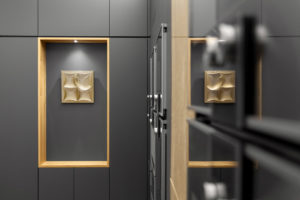 Franco Mazzucchelli. I LOVE MULTIPLE. Installation view at Gaggenau DesignElementi, Roma. Photo © Francesca Piovesan
Franco Mazzucchelli. I LOVE MULTIPLE. Installation view at Gaggenau DesignElementi, Roma. Photo © Francesca Piovesan
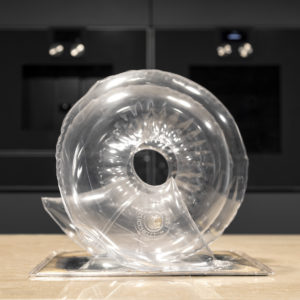 Franco Mazzucchelli. I LOVE MULTIPLE. Installation view at Gaggenau DesignElementi, Roma. Photo © Francesca Piovesan
Franco Mazzucchelli. I LOVE MULTIPLE. Installation view at Gaggenau DesignElementi, Roma. Photo © Francesca Piovesan
 Franco Mazzucchelli, A.TO A., Torino, 1971
Franco Mazzucchelli, A.TO A., Torino, 1971
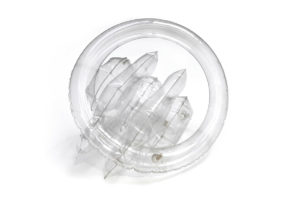 Franco Mazzucchelli, Gioco Gonfiabile Multiplo, 1968. Photo © Francesca Piovesan
Franco Mazzucchelli, Gioco Gonfiabile Multiplo, 1968. Photo © Francesca Piovesan
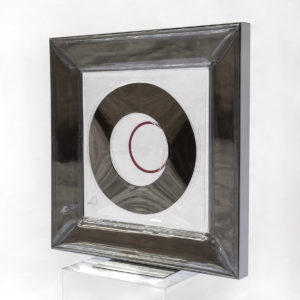 Franco Mazzucchelli, Bifacciale n. 2, 2017. Photo © Francesca Piovesan
Franco Mazzucchelli, Bifacciale n. 2, 2017. Photo © Francesca Piovesan
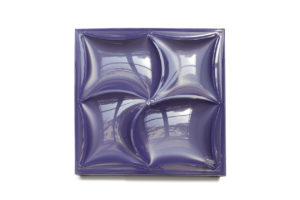 Franco Mazzucchelli, BD Convesso Viola, 2020. Photo © Francesca Piovesan
Franco Mazzucchelli, BD Convesso Viola, 2020. Photo © Francesca Piovesan

Graduated in contemporary art, has been working in collaboration with various contemporary art galleries, private foundations, art centers in Italy and abroad.






NO COMMENT